Maui Nui Botanical Gardens
Back down at sea level, is another variety of garden — The Maui Nui Botanical Gardens. They are "dedicated to the protection of Maui Nui's rich native plants and cultural heritage. By collecting, cultivating, and distributing native and Polynesian-introduced plants MNBG provides people with a gathering place to see and understand the important relationship these plants have to our economic, social, and cultural livelihoods".
Near the entrance is a fine specimen of coconut tree. Niu (Hawai`ian word for "coconut") was introduced by the ancient Polynesians when they first arrived in the Hawai`ian islands. The meat of and the water contained in the nut were important parts of the Hawai`ian diet. The hard shell found many uses both practical and decorative. Although it was not always this way, it would be hard to imagine Hawai`i without coconut trees swaying in the trade winds.
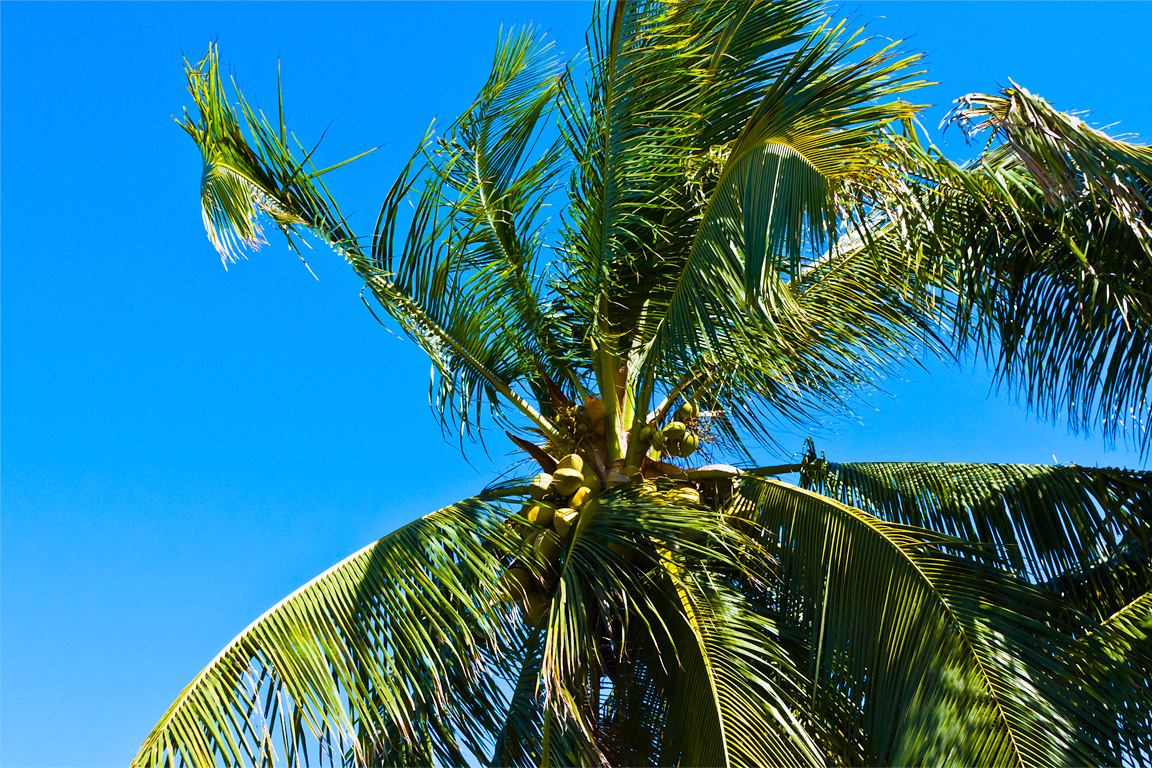
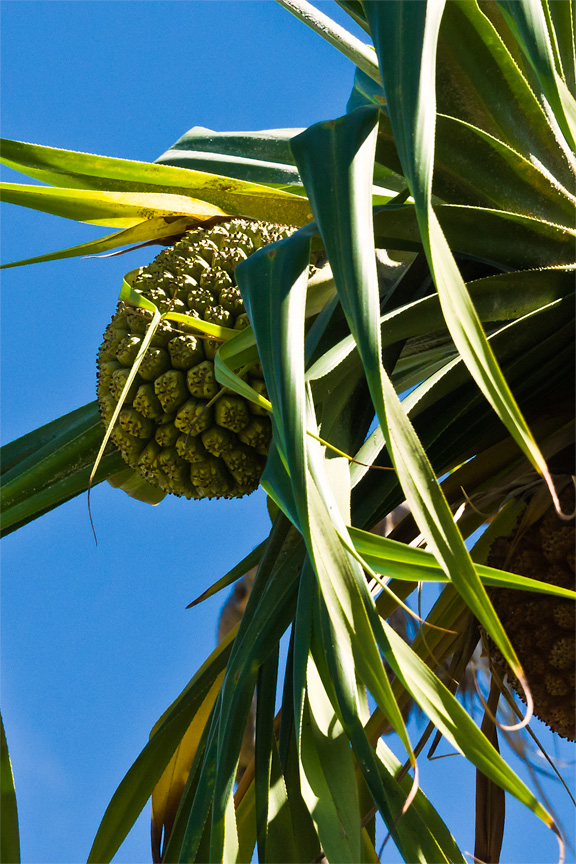 Next is a fine example of a Pandanus fruit which the Hawai`ians called "Pū hala" or just "Hala". It is currently thought to be indigenous to Hawai'i, but there may have been additional introductions by the early Polynesians.
Next is a fine example of a Pandanus fruit which the Hawai`ians called "Pū hala" or just "Hala". It is currently thought to be indigenous to Hawai'i, but there may have been additional introductions by the early Polynesians.
The fruit can be eaten raw or cooked — and was a major food item for the Hawai`ians. Interestingly, the fruit is so full of fiber, it functions as a natural dental floss. The leaves found many uses such as baskets, mats, canoe sails, thatch roofs and grass skirts.
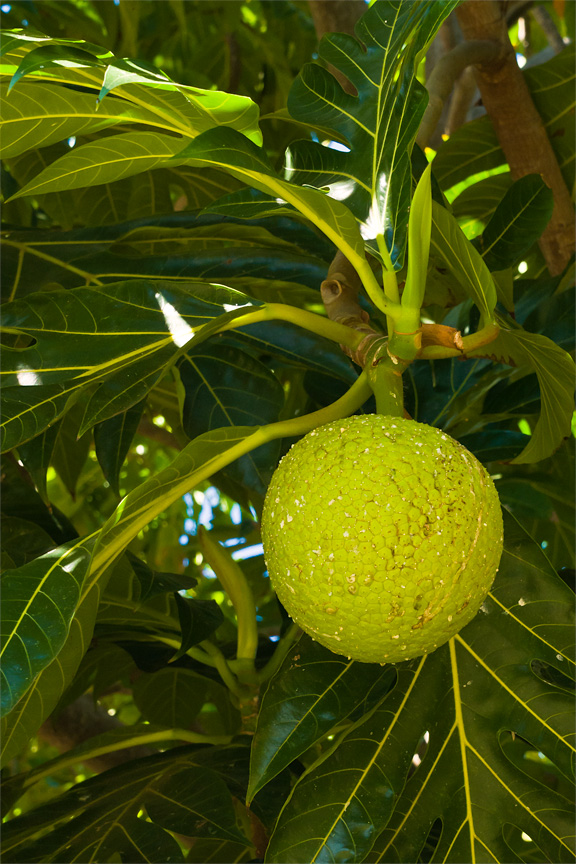 This is an `Ulu or breadfruit. It was introduced by the ancient Polynesians, having introduced it to most of the Pacific Ocean islands reflecting its use as a staple food. It is normally roasted, baked, fried or boiled and the taste is described as potato-like or even fresh-baked bread.
This is an `Ulu or breadfruit. It was introduced by the ancient Polynesians, having introduced it to most of the Pacific Ocean islands reflecting its use as a staple food. It is normally roasted, baked, fried or boiled and the taste is described as potato-like or even fresh-baked bread.
Because of the seasonality of the harvest, one traditional method of dealing with the overabundance of fruit at certain times of the year was to bury peeled and washed fruit in a leaf-lined pit. The fruit would ferment with a resulting sticky sour paste. Stored in such a pit, the contents would be preserved for a year — and some reports suggest that some pits yielded edible paste some 20 years after burial.
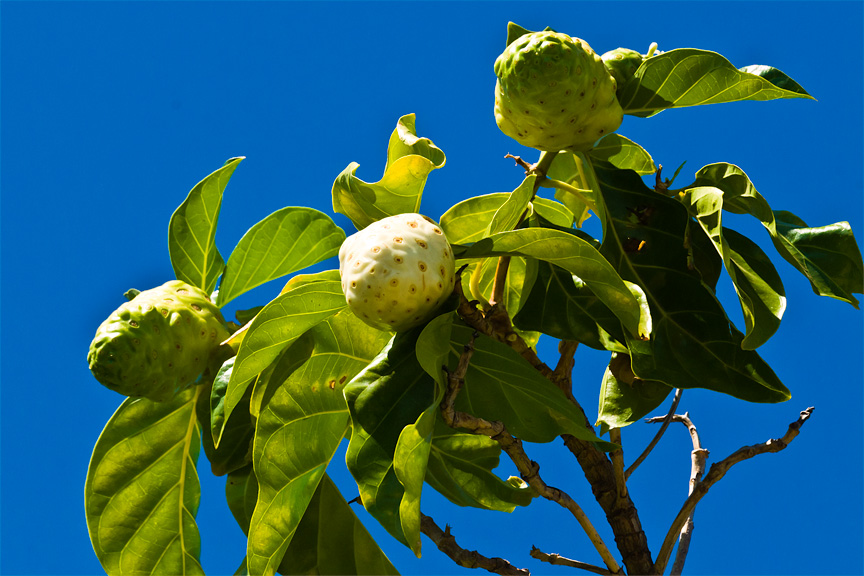 The fruit on this tree looks like melted wax but is actually the fruit of the Noni, also known as the Indian Mulberry. It was introduced by the ancient Polynesians for medicinal purposes and as famine food of last resort.
The fruit is edible but is said to be nauseatingly foul-smelling — very much like fresh vomit mixed with rancid garbage. It is easy to understand why it would be a food of last resort.
The fruit on this tree looks like melted wax but is actually the fruit of the Noni, also known as the Indian Mulberry. It was introduced by the ancient Polynesians for medicinal purposes and as famine food of last resort.
The fruit is edible but is said to be nauseatingly foul-smelling — very much like fresh vomit mixed with rancid garbage. It is easy to understand why it would be a food of last resort.
As I strolled through the gardens, I encountered some beautiful views of the West Maui Mountains.

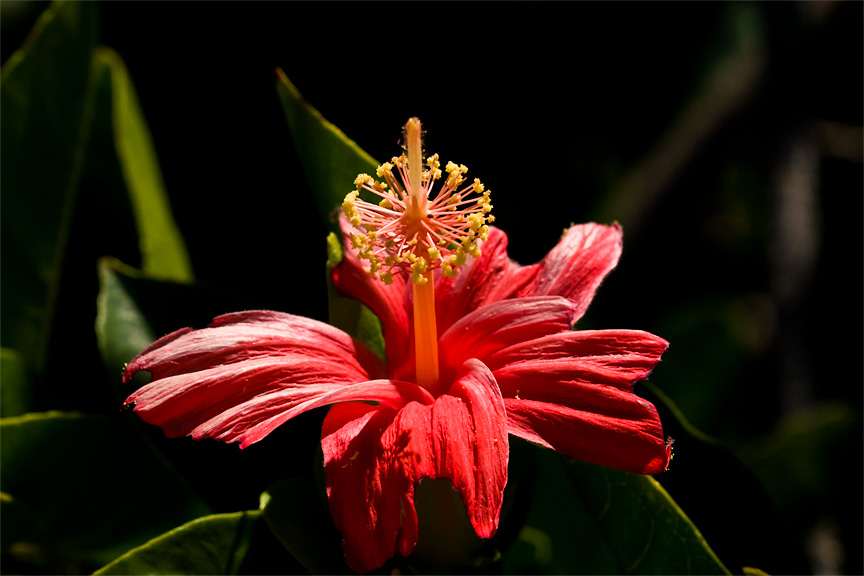 People often associate Hibicus with Hawai`i and that is partially accurate. There are native species but also many introduced later. This native variety is a Hibiscus clayi. It is listed as endangered.
People often associate Hibicus with Hawai`i and that is partially accurate. There are native species but also many introduced later. This native variety is a Hibiscus clayi. It is listed as endangered.
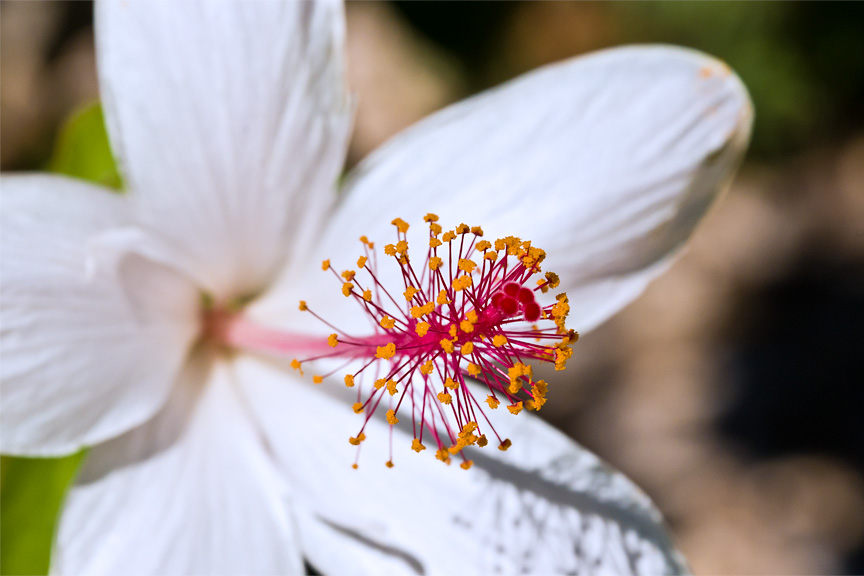 Here is a fine specimen of another native Hibiscus, Pua Aloalo or Hibiscus arnottianus. It is one of the few varieties with fragrant flowers. It is very rare in the wild.
Here is a fine specimen of another native Hibiscus, Pua Aloalo or Hibiscus arnottianus. It is one of the few varieties with fragrant flowers. It is very rare in the wild.
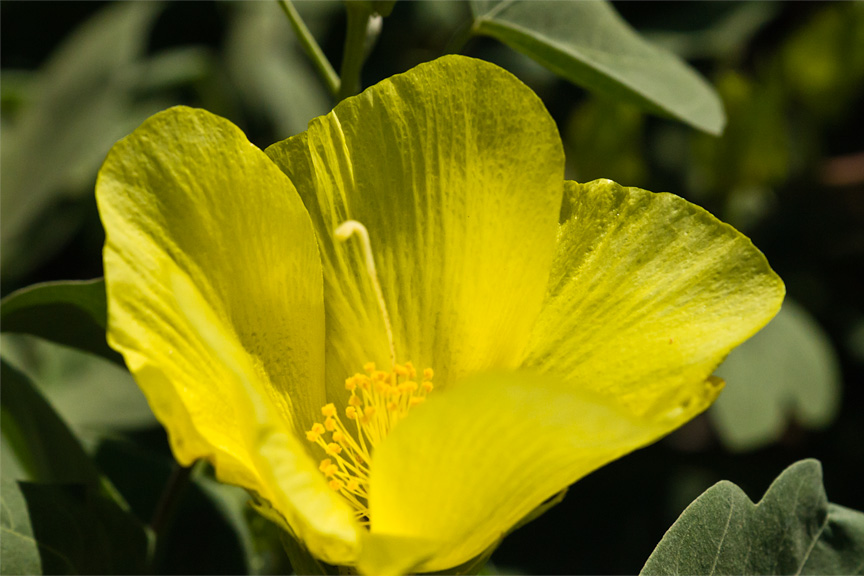 This is the Pua `Ilima, AKA Sida fallax. It is in the Hibiscus family Malvaceae that occurs on most of the Pacific Islands. It is the official flower of the island of O`ahu.
This is the Pua `Ilima, AKA Sida fallax. It is in the Hibiscus family Malvaceae that occurs on most of the Pacific Islands. It is the official flower of the island of O`ahu.
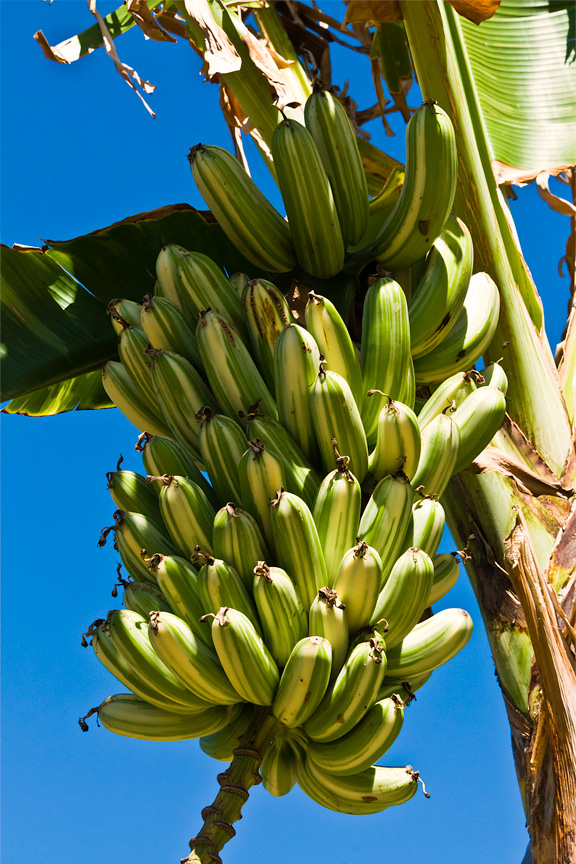 Striped bananas! I encountered them at the Maui County Fair. As with many other food plants, bananas were also introduced to Hawai`i by the ancient Polynesians. Obviously, they were used as food but the leaves also provided shelter and liners for imus — underground ovens used to cook pig.
Striped bananas! I encountered them at the Maui County Fair. As with many other food plants, bananas were also introduced to Hawai`i by the ancient Polynesians. Obviously, they were used as food but the leaves also provided shelter and liners for imus — underground ovens used to cook pig.
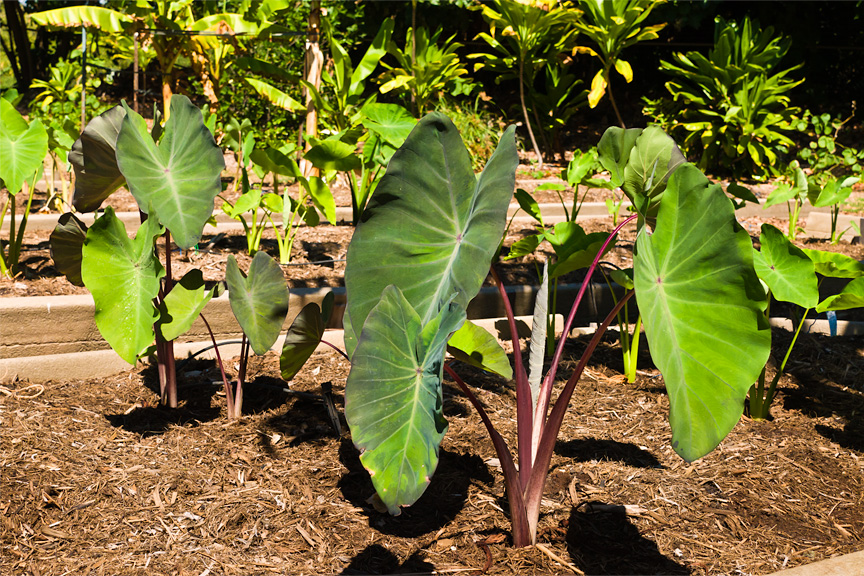 The big elephant ear-like leaves tell us that we have encountered a taro patch. Taro was also brought to Hawai`i in the ocean-going double-hulled sailing canoes by ancient Polynesians. In Hawai`i it is typically cultivated in paddy fields, much like rice. In fact, the fields were terraced below a water source where the water would stream from one paddy field to the next below until the stream eventually flowed to the ocean.
The big elephant ear-like leaves tell us that we have encountered a taro patch. Taro was also brought to Hawai`i in the ocean-going double-hulled sailing canoes by ancient Polynesians. In Hawai`i it is typically cultivated in paddy fields, much like rice. In fact, the fields were terraced below a water source where the water would stream from one paddy field to the next below until the stream eventually flowed to the ocean.
The corms are roasted, baked or boiled then eaten immediately or allowed to ferment producing poi — the staple starch of old Hawai`i.
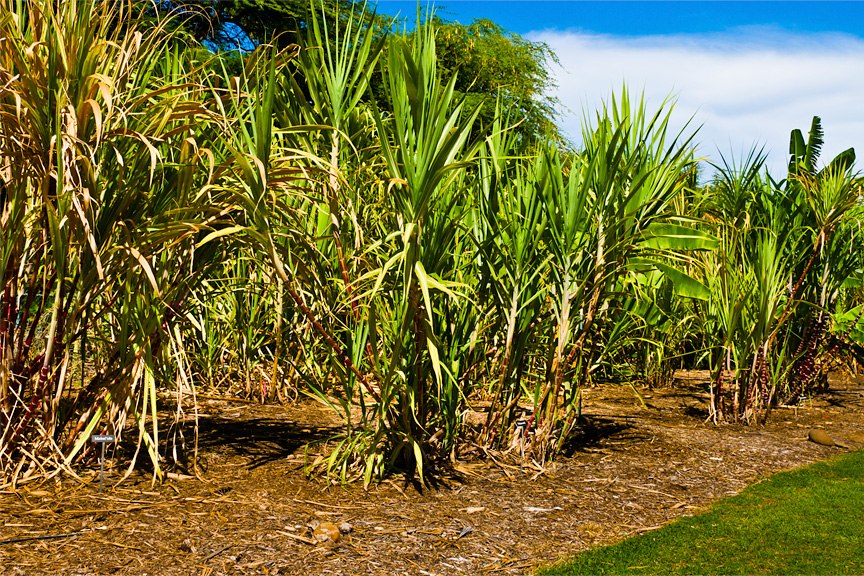 Sugar cane was introduced to Hawai`i approximately 600 AD, long before Captain Cook stumbled into the islands. The first sugar plantation was planted in 1849 in Hana, Maui. Over time, sugar became big business although harvesting has seen steep declines in recent years.
Sugar cane was introduced to Hawai`i approximately 600 AD, long before Captain Cook stumbled into the islands. The first sugar plantation was planted in 1849 in Hana, Maui. Over time, sugar became big business although harvesting has seen steep declines in recent years.
After walking about in the hot sun, it is quite refreshing to relax in the shade of a mature tree. I believe this is a variety of ficus. I love the buttress roots which are thought to prevent the tree from falling over.
This is a lovely botanical garden with a secret which is known by long-time residents — the grounds used to house the Maui Zoo. The animals are long gone but the remnants of the buildings that caged the animals remain. You will see them (the remnants, not the animals) as you stroll the grounds. If I had not told you this history, you would probably have puzzled over their original purpose. Regardless, do stop for a visit to see Hawai`ian culture being preserved for future generations.
